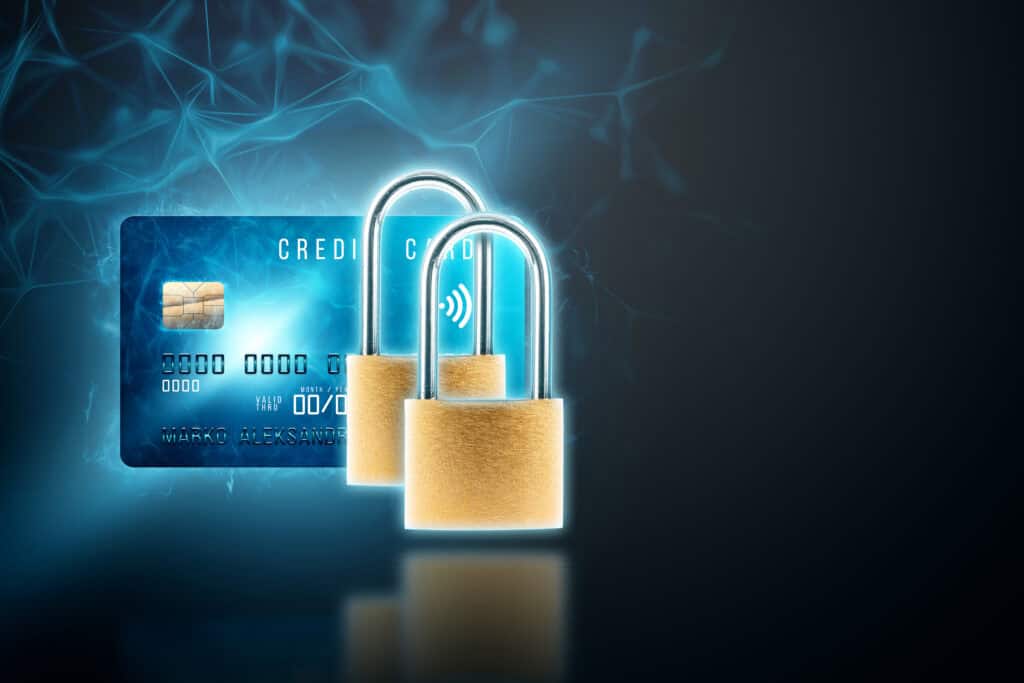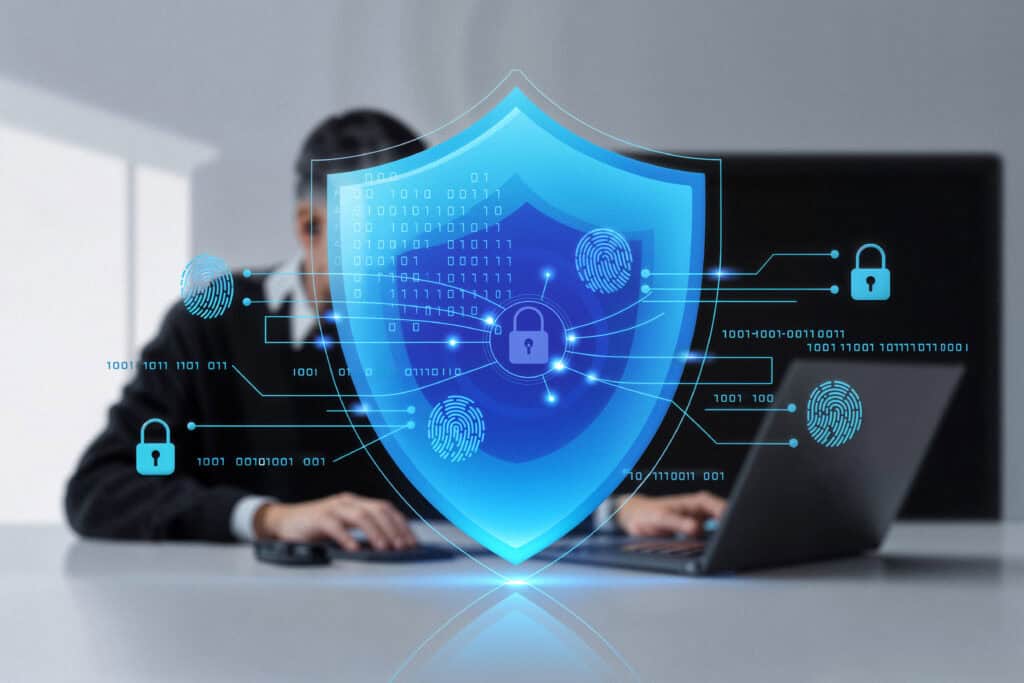
By Katherine Robertson March 7, 2025
With the rapid advancement of digital transactions, security threats have also increased, making transaction security a top priority for businesses of all sizes. Cybercriminals are constantly finding new ways to exploit vulnerabilities in payment systems, putting businesses and their customers at risk.
Securing financial transactions is no longer optional—it is a necessity. Businesses that fail to implement robust security measures not only risk financial losses but also damage their reputation and customer trust.

Understanding Transaction Security
What is Transaction Security?
Transaction security refers to the measures taken to ensure that financial transactions are protected from fraud, cyberattacks, and unauthorized access. This involves securing customer data, ensuring the authenticity of transactions, and preventing breaches that can lead to financial losses.
Why is Transaction Security Important?
Ensuring secure transactions is vital for several reasons:
- Customer Trust: Secure transactions build trust and confidence among customers.
- Compliance: Many industries require businesses to comply with regulations like PCI-DSS (Payment Card Industry Data Security Standard).
- Fraud Prevention: Strong security measures help reduce fraud and unauthorized transactions.
- Business Reputation: A security breach can lead to a loss of customers and a tarnished brand image.
Best Practices for Enhancing Transaction Security
1. Implement Secure Payment Gateways
A reliable and secure payment gateway ensures the safety of online transactions. Businesses should choose payment gateways that offer end-to-end encryption, fraud detection tools, and multi-layer authentication.
Choosing the Right Payment Gateway
When selecting a payment gateway, businesses should consider:
- PCI Compliance: Ensure the gateway adheres to PCI-DSS standards.
- Encryption: Look for SSL/TLS encryption to secure data transmission.
- Fraud Detection Tools: Features like address verification and tokenization help prevent fraud.
- Multi-Factor Authentication (MFA): Adding an extra layer of authentication enhances security.
2. Utilize End-to-End Encryption
Encryption ensures that transaction data remains secure while being transmitted over the internet. Businesses should implement:
- SSL/TLS Encryption: Protects data in transit between customers and servers.
- AES Encryption: Encrypts stored payment data to prevent unauthorized access.
- Tokenization: Converts sensitive data into a unique identifier, reducing the risk of data breaches.
3. Enable Multi-Factor Authentication (MFA)
Multi-factor authentication adds an extra layer of security by requiring users to verify their identity through multiple means. This could include:
- A password
- A one-time PIN (OTP) sent to a registered device
- Biometric authentication such as fingerprint or facial recognition
MFA significantly reduces the chances of unauthorized access, even if login credentials are compromised.
4. Regular Security Audits and Penetration Testing
Conducting security audits helps businesses identify vulnerabilities before they are exploited by cybercriminals. Regular penetration testing can:
- Uncover weaknesses in payment systems
- Ensure compliance with security regulations
- Provide insights for improving security measures
Businesses should schedule audits at least once a year and after major system updates.
5. Educate Employees on Security Best Practices
Human error is one of the leading causes of security breaches. Training employees on security best practices ensures they:
- Recognize phishing attempts and avoid suspicious emails
- Use strong, unique passwords for business accounts
- Follow secure transaction handling procedures
Regular security awareness training should be a part of business operations to keep employees informed about the latest threats and preventive measures.
6. Monitor Transactions for Suspicious Activity
Transaction monitoring helps businesses detect and prevent fraudulent activities in real time. Advanced monitoring tools use AI and machine learning to:
- Analyze transaction patterns
- Detect anomalies
- Block suspicious transactions before they are completed
Setting up automated alerts for unusual transactions can help businesses respond quickly to potential threats.
7. Implement Secure Customer Authentication
Strong customer authentication (SCA) adds another layer of security to transactions. SCA requires users to verify their identity through at least two of the following methods:
- Something they know (password or PIN)
- Something they have (smartphone or token)
- Something they are (fingerprint or face recognition)
SCA is particularly important for online payments and helps businesses comply with regulations like PSD2 in the European Union.
8. Use Secure APIs for Payment Processing
APIs (Application Programming Interfaces) play a crucial role in modern payment processing systems. Businesses should ensure their APIs:
- Use OAuth for authentication
- Implement rate limiting to prevent abuse
- Are regularly updated to patch security vulnerabilities
Poorly secured APIs can expose transaction data to hackers, leading to severe financial and reputational damage.
9. Stay Updated with Compliance Requirements
Regulatory bodies enforce security standards to protect businesses and consumers. Companies must stay updated with regulations such as:
- PCI-DSS (Payment Card Industry Data Security Standard)
- GDPR (General Data Protection Regulation)
- PSD2 (Revised Payment Services Directive)
Non-compliance can result in hefty fines and legal consequences, making it crucial for businesses to follow the latest security standards.
10. Backup Transaction Data Securely
Data loss due to cyberattacks or system failures can be catastrophic. Businesses should:
- Maintain secure, encrypted backups of transaction data
- Store backups in multiple locations, including cloud and offline storage
- Regularly test backup recovery processes
Having a reliable backup strategy ensures business continuity in case of security incidents.

Future Trends in Transaction Security
AI and Machine Learning for Fraud Prevention
Artificial intelligence and machine learning are transforming transaction security by detecting fraudulent activities in real time. These technologies analyze large datasets to identify suspicious patterns and prevent unauthorized transactions.
Blockchain for Secure Transactions
Blockchain technology provides a decentralized and tamper-proof ledger for transactions. It enhances security by eliminating single points of failure and ensuring transparency.
Biometric Authentication
Biometric authentication, such as fingerprint scanning and facial recognition, is becoming more prevalent in securing transactions. It offers a seamless and highly secure method for identity verification.
Tokenization and Contactless Payments
Tokenization is replacing sensitive card details with unique tokens, reducing the risk of data breaches. Contactless payments, powered by NFC technology, provide a secure and convenient way to complete transactions without exposing card information.
Conclusion
Transaction security is a critical concern for modern businesses. With cyber threats evolving constantly, companies must implement robust security measures to protect sensitive data, ensure compliance, and maintain customer trust. By adopting secure payment gateways, encryption, multi-factor authentication, and regular security audits, businesses can significantly enhance transaction security.
The future of transaction security lies in advanced technologies such as AI-driven fraud detection, blockchain, and biometric authentication. Staying ahead of these trends and continuously improving security protocols will help businesses safeguard their financial transactions and maintain a strong reputation in the digital economy.
By prioritizing security, businesses can create a safer environment for customers, minimize financial risks, and build long-term trust in their brand.